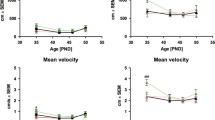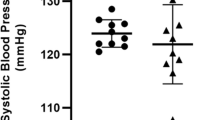Abstract
Attention deficit hyperactivity disorder (ADHD) is a heterogeneous behavioural disorder that affects 3–15 % of children worldwide. Spontaneously hypertensive rats (SHR) display the major symptoms of ADHD (hyperactivity, impulsivity and poor performance in tasks that require sustained attention) and are widely used to model the disorder. The present study aimed to test the hypothesis that SHR have a diminished capacity to generate ATP required for rapid synchronized neuronal firing, failure of which might lead to disturbances in neurotransmission that could contribute to their ADHD-like behaviour. Duplicate pooled (n = 5) samples of prefrontal cortex and striatum of prepubertal (35-day-old) SHR and Wistar Kyoto (WKY) rats were subjected to iTRAQ labeling and matrix-assisted laser desorption/ionization tandem mass spectrometry (MALDI-MS/MS). The MS/MS spectra were analyzed with ProteinPilot using the Ratus ratus database. Proteins detected with >95 % confidence were tested. SHR had decreased levels of several proteins involved in energy metabolism, cytoskeletal structure, myelination and neurotransmitter function when compared to WKY. Differences in protein levels between SHR and WKY were similar in prefrontal cortex and striatum, suggesting global changes in cortico-striato-thalamo-cortical circuits.



Similar content being viewed by others
References
Abikoff HB, Jensen PS, Arnold LL et al (2002) Observed classroom behaviour of children with ADHD: relationship to gender and comorbidity. J Abnorm Child Psychol 30:349–359
Adisetiyo V, Tabesh A, Di Martino A et al (2014) Attention-deficit/hyperactivity disorder without comorbidity is associated with distinct atypical patterns of cerebral microstructural development. Hum Brain Mapp 35:2148–2162
Alexander AL, Lee JE, Lazar M, Field AS (2007) Diffusion tensor imaging of the brain. Neurotherapeutics 4:316–329
Attwell D, Gibb A (2005) Neuroenergetics and the kinetic design of excitatory synapses. Nat Rev Neurosci 6:841–849
Benes FM, Turtle M, Khan Y, Farol P (1994) Myelination of a key relay zone in the hippocampal formation occurs in the human brain during childhood, adolescence, and adulthood. Arch Gen Psychiatry 51:477–484
Berger I, Slobodin O, Aboud M, Melamed J, Cassuto H (2013) Maturational delay in ADHD: evidence from CPT. Front Hum Neurosci 7:691
Biederman J, Monuteaux MC, Doyle AE et al (2004) Impact on executive function deficits and attention-deficit/hyperactivity disorder (ADHD) on academic outcomes in children. J Consult Clin Psychol 72:757–766
Cao Q, Shu N, An L et al (2013) Probabilistic diffusion tractography and graph theory analysis reveal abnormal white matter structural connectivity networks in drug-naïve boys with attention deficit/hyperactivity disorder. J Neurosci 33:10676–10687
Carrey NJ, MacMaster FP, Gaudet L, Schmidt MH (2007) Striatal creatine and glutamate/glutamine in attention-deficit/hyperactivity disorder. J Child Adolesc Psychopharmacol 17:11–17
Carter BC, Bean BP (2009) Sodium entry during action potentials of mammalian neurons: incomplete inactivation and reduced metabolic efficiency in fast-spiking neurons. Neuron 64:898–909
Castellanos FX, Lee PP, Sharp W et al (2002) Developmental trajectories of brain volume abnormalities in children and adolescents with attention-deficit/hyperactivity disorder. JAMA 288:1740–1748
Cheng J, Xiong Z, Duffney LJ et al (2014) Methylphenidate exerts dose-dependent effects on glutamate receptors and behaviors. Biol Psychiatry. doi:10.1016/j.biopsych.2014.04.003
Cubillo A, Halari R, Ecker C, Giampietro V, Taylor E, Rubia K (2010) Reduced activation and inter-regional functional connectivity of fronto-striatal networks in adults with childhood attention-deficit hyperactivity disorder (ADHD) and persistent symptoms during tasks of motor inhibition and cognitive switching. J Psychiatr Res 181:193–198
Dalley JW, Mar AC, Economidou D, Robbins TW (2008) Neurobehavioral mechanisms of impulsivity: fronto-striatal systems and functional neurochemistry. Pharmacol Biochem Behav 90:250–260
De Zeeuw P, Mandl RCW, Hulshoff Pol HE, van Engeland H, Durston S (2012) Decreased frontostriatal microstructural organization in attention deficit/hyperactivity disorder. Hum Brain Mapp 33:1941–1951
Fair DA, Posner J, Nagel BJ et al (2010) Atypical default network connectivity in youth with attention-deficit/hyperactivity disorder. Biol Psychiat 68:1084–1091
Howells FM, Russell VA (2008) Glutamate-stimulated release of norepinephrine in hippocampal slices of animal models of attention-deficit/hyperactivity disorder (spontaneously hypertensive rat) and depression/anxiety-like behaviours (Wistar-Kyoto rat). Brain Res 1200:107–115
Igata S, Hayashi T, Itoh M, Akasu T, Takano M, Ishimatsu M (2013) Persistent α1-adrenergic receptor function in the nucleus locus coeruleus causes hyperexcitability in AD/HD model rats. J Neurophysiol 111:777–786
Jensen V, Rinholm JE, Johansen TJ et al (2009) N-methyl-D-aspartate receptor subunit dysfunction at hippocampal glutamatergic synapses in an animal model of attention-deficit/hyperactivity disorder. Neurosci 158:353–64
Killeen PR, Russell VA, Sergeant JA (2013) A behavioral neuroenergetics theory of ADHD. Neurosci Biobehav Rev 37:625–657
Lehohla M, Kellaway L, Russell VA (2004) NMDA receptor function in the prefrontal cortex of a rat model of attention-deficit hyperactivity disorder. Metab Brain Dis 19:35–42
Liso Navarro AA, Sikoglu EM, Heinze CR et al (2014) Effect of diet on brain metabolites and behaviour in spontaneously hypertensive rats. Behav Brain Res 270:240–247
Miller EM, Pomerleau F, Huettl P, Gerhardt GA, Glaser PE (2014) Aberrant glutamate signalling in the prefrontal cortex and striatum of the spontaneously hypertensive rat model of attention-deficit/hyperactivity disorder. Psychopharmacology 231:3019–3029
Nagel BJ, Bathula D, Herting M et al (2011) Altered white matter microstructure in children with attention-deficit/hyperactivity disorder. J Am Acad Child Adolesc Psychiatr 50:283–292
Park S, Hong SB, Kim JW et al (2013) White-matter connectivity and methylphenidate-induced changes in attentional performance according to α2A-adrenergic receptor gene polymorphisms in Korean children with attention-deficit hyperactivity disorder. J Neuropsychiatry Clin Neurosci 25:222–228
Pellerin L, Magistretti PJ (2012) Sweet sixteen for ANLS. J Cereb Blood Flow Metab 32:1152–1166
Pellerin L, Bouzier-Sore AK, Aubert A et al (2007) Activity-dependent regulation of energy metabolism by astrocytes: an update. Glia 55:1251–1262
Ritz MF, Grond-Ginsbach C, Engelter S, Lyrer P (2012) Gene expression suggests spontaneously hypertensive rats may have altered metabolism and reduced hypoxic tolerance. Curr Neurovasc Res 9:10–19
Rowland AS, Skipper BJ, Umbach DM et al (2013) The prevalence of ADHD in a population-based sample. J Atten Disord. doi:10.1177/1087054713513799
Rubia K, Halari R, Cubillo A et al (2011) Methylphenidate normalizes fronto-striatal underactivation during interference inhibition in medication-naïve boys with attention-deficit hyperactivity disorder. Neuropsychopharm 36:1575–1586
Russell VA (2001) Increased AMPA receptor function in slices containing the prefrontal cortex of spontaneously hypertensive rats. Metab Brain Dis 16:143–149
Russell VA (2007) Neurobiology of animal models of attention-deficit hyperactivity disorder. J Neurosci Methods 161:185–198
Russell VA, Wiggins T (2000) Increased glutamate-stimulated norepinephrine release from prefrontal cortex slices of spontaneously hypertensive rats. Metab Brain Dis 15:297–304
Russell VA, Oades RD, Tannock R et al (2006) Response variability in attention-deficit/hyperactivity disorder: a neuronal and glial energetics hypothesis. Behav Brain Funct 2:30
Sabbatini M, Baldoni E, Cadoni A, Vitaioli L, Zicca A, Amenta F (1999) Forebrain white matter in spontaneously hypertensive rats: a quantitative image analysis study. Neurosci Lett 265:5.8
Sagvolden T (2000) Behavioral validation of the spontaneously hypertensive rat (SHR) as an animal model of attention-deficit/hyperactivity disorder (AD/HD). Neurosci Biobehav Rev 24:31–39
Sagvolden T, Russell VA, Aase H, Johansen EB, Farshbaf M (2005) Rodent models of attention-deficit/hyperactivity disorder. Biol Psychiatry 57:1239–1247
Sagvolden T, Johansen EB, Wøien G et al (2009) The spontaneously hypertensive rat model of ADHD—the importance of selecting the appropriate reference strain. Neuropharmacology 57:619–626
Smith A, Taylor E, Lidzba K, Rubia K (2003) A right hemispheric frontocerebellar network for time discrimination of several hundreds of milliseconds. Neuroimage 20:344–350
Sun D, Cheng Y, Zhou D et al (2013) Quantitattive proteome of medulla oblongata in spontaneously hypertensive rats. J Proteome Res 12:390–395
Udvardi PT, Föhr KJ, Henes C et al (2013) Atomoxetine affects transcription/translation of the NMDA receptor and the norepinephrine transporter in the rat brain—an in vivo study. Drug Des Devel Ther 7:1433–1446
Van Meel CS, Oosterlaan J, Heslenfeld DJ, Sergeant JA (2005) Motivational effects on motor timing in attention-deficit/hyperactivity disorder. J Am Acad Child Adolesc Psychiatry 44:451–460
Van Schouwenburg MR, Onnink AMH, Ter Huurne N et al (2014) Cognitive flexibility depends on white matter microstructure of the basal ganglia. Neuropsychologia 53:171–177
Wu KL, Wu CA, Wu CW, Chan SH, Chang AY, Chan JY (2013) Redox-sensitive oxidation and phosphorylation of PTEN contribute to enhanced activation of PI3K/Akt signaling in rostral ventrolateral medulla and neurogenic hypertension in spontaneously hypertensive rats. Antioxid Redox Signal 18:36–50
Zhao X, Rosenke R, Kronemann D et al (2009) The effects of aging on N-methyl-D-aspartate receptor subunits in the synaptic membrane and relationships to long-term spatial memory. Neuroscience 162:933–945
Acknowledgments
The authors wish to thank the Medical Research Council and the University of Cape Town for the financial support and the Centre for Proteomic and Genomic Research for the proteomic analyses.
Author information
Authors and Affiliations
Corresponding author
Rights and permissions
About this article
Cite this article
Dimatelis, J.J., Hsieh, J.H., Sterley, TL. et al. Impaired Energy Metabolism and Disturbed Dopamine and Glutamate Signalling in the Striatum and Prefrontal Cortex of the Spontaneously Hypertensive Rat Model of Attention-Deficit Hyperactivity Disorder. J Mol Neurosci 56, 696–707 (2015). https://doi.org/10.1007/s12031-015-0491-z
Received:
Accepted:
Published:
Issue Date:
DOI: https://doi.org/10.1007/s12031-015-0491-z




